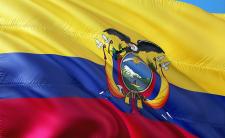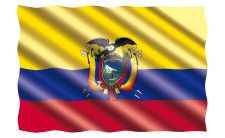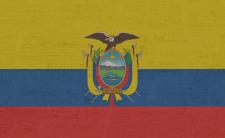Political system and history
Like most South American States, Ecuador has US style presidential system ofgovernment with Rafael Correa as the current president. The country attained independence from Spain in 1830. Between 1972 and 1979, the country was under military rule, led first by General Guillermo Rodriguez and later by Admiral Alfredo Povedo. A new constitution in 1979 and elections in April of the same year saw a return to civilian rule with Jaime Roldos Aguilera as president. Other leaders after him and before Correa include Olsvaldo Hurtado, Leon Febres and Rodrigo B. Cevallos.
Constitutional history and development
Ecuador’s constitutional history, especially for much of the 19th and early 20th, centuries was dominated by tension between the clergy and the civilian authorities represented by the Conservatives and Liberals respectively.
The 1830 Constitution
Considered as Ecuador's first constitution, it was adopted when the country seceded from the Confederation of Grand Colombia. It was based on existing charters such as the Quito State Charter of 1812 and the Grand Colombia constitutions of Cúcuta of 1821. The Quito State Charter, drafted prior to independence, called for a unicameral legislature and a popular and representative state established through indirect elections by its citizens. In practice however, political space was only opened up to the landed gentry and wealthy persons. The Floreana Constitution, as it was also called, established a unitary and centralized presidential system of government, and separation of powers, with a dominant executive. The 1830 constitution also established a unicameral congress, elected by indirect suffrage and made up of an equal number (ten) of deputies from each of the three districts-Quito, Azuay, and Guayaquil-and a Council of State to assist the executive in administering the government and to substitute for Congress during the recess. This constitution lasted 13 years.
The Constitutions of 1843 and 1845
The 1843 constitution, also called the Slavery Charter, extended the presidential term from four to eight years, and institutionalised Roman Catholicism as the official state religion. It also created a bicameral legislature comprising a senate and chamber of deputies. The 1845 constitution vested sovereignty in the people and guaranteed male universal suffrage.
The Constitutions of 1861 and 1869
The 1861 constitution was the most innovative and representative in Ecuador’s constitutional development during this period. Promulgated by President Gabriel G. Moreno, it eliminated the financial requirements for citizenship, first established in the 1830 constitution and created the system of proportional representation for Ecuador’s provinces in the chamber of deputies. It also introduced direct and secret universal suffrage for the election of most public officials. Direct universal suffrage was established for electing the president and free speech and thought were constitutionalised. Like previous constitutions, it also prohibited the immediate re-election of presidents. This constitution was replaced eight years later with a more authoritarian charter promulgated by General Flores Garcia. Referred to as the Black Charter, the 1869 constitution extended the presidential term of office to six years, and, made Roman Catholicism a requirement for citizenship.
The Liberal Period of 1895-1925
Two constitutions characterised this period. The first - promulgated in 1897 banned religious orders and abolished the privileges of the Roman Catholic Church. The second charter, adopted in 1906 and considered the most durable, abolished the death penalty and guaranteed civil and political rights. It established the separation of church and state and introduced individual freedoms.
The Constitution of 1929
In 1929, a new constitution incorporating features from other models and described as a semi parliamentary charter was adopted. Chiefly, it reorganized the Senate into a body consisting of fifteen senators elected to represent specific interest groups and extremely weakened the powers of the president. The charter also introduced various social, economic, and political rights, including the right of literate women of at least twenty-one years of age to have citizenship and to vote, and the right of minorities to elect deputies and provincial councillors (consejeros provinciales).
The 1945 and 1946 Constitutions
Unable to withstand the tsunami effect of the 1930 crisis on political institutions, the 1929 constitution was eventually replaced with a new charter in 1945, following six months of deliberations in a Constituent Assembly, dominated by the leftist Ecuadorian Democratic Alliance. Among its key features were the imposition of checks on the presidential use of veto and emergency powers, a unicameral legislature and the abolition of the concept of official state religion. This constitution, however, did not last a year as 1946 saw the adoption of another charter that restored the bicameral legislature and reinforce executive powers. It also introduced the office of vice president which was absent in most of the previous constitutions.
The Constitution of 1967 and the 1972 and 1976 Coups d'état
By far Ecuador’s most extensive constitution so far, it was drafted by a constituent assembly and legalized political parties. It also made voting obligatory for women as well as for men and made congress bicameral. However, because it contained provisions that displeased then President Velasco, it was suspended in later the same year and rule by decree instituted as the president accused the constitution of having destroyed executive control, amputated the Senate's power, divested the police of all authority, and dismembered the administrative organization.
In February 1972, Velasco was deposed in a coup by General Guillermo Rodríguez Lara who reinstated the 1945 document only to later suspend it in 1974. Another military junta would oust Rodriguez in January 1976 Rodríguez and again reinstated the 1945 constitution. In an unprecedented measure, in Ecuador's constitutional history, the junta held a popular referendum on January 15, 1978, to decide between a reformed version of the 1945 document and a new charter. 44 percent of the voters cast their ballots for the latter, and 31 percent for the former. Nullified votes totaled 23 percent. This reforms resulted in the 1979 constitution.
The Constitution of 1979 and Subsequent Amendements
Based on the 1945 and 1967 Charters, the 1979 Constitution was much more progressive than the latter. It constitution marked the beginning of new relations between the political system and society in general. It granted universal suffrage and citizenship to all Ecuadorians over eighteen including illiterates. It also created a unicameral congress and prohibited the president and vice president from seeking successive terms. The Constitution extended the presidential term to five years and also created the National Development Council (Consejo Nacional de Desarrollo - Conade), headed by the vice president, and strengthened the independence of the judiciary. Further amendments in 1984 resolved limitations that were found in the 1979 document. As a result, the terms of office for principal state officials, including the president were reduced from five to four years. Terms of office for certain judges were reduced from six to four years. In addition, the president and vice president could only be tried for treason, bribery and other offecnces that compromised the integrity and honour of the state. The charter banned discrimination based on race, sex, religion, language, or social status. This constitution remained in force until political chaos; traceable to the political winds of change that started with the fall of the Berlin wall in 1989 led to another revision in 1998. This constitution lasted between 1998 and 2006- a period of serious political instability that will see Ecuador change almost eight presidents.
The 2007 Constitution Building Process
In 2005, a political vendetta that started with the illegal dismissals of president Bucaram and later Jamil Mahuad, resulted in yet another dismissal of incumbent President Lucio Gutierrez. His successor and former vice-President, Alfredo Palacio, the seventh President in nine years, called for a popular consultation on the installation of a National Constituent Assembly to amend the 1998 Constitution. A request to the Supreme Electoral Tribunal to approve this initiative failed. It is in this context that Rafael Correa will emerge and eventually ascend to power, after more than a decade of political instability, on the platform of establishing a new constitutional framework in 2007.
Key timelines of the 2007 Constitutional Process
| December 2006 | Rafael Correa is elected president on the promise to bring about constitutional reforms |
| February 2007 | Congress approves Correa's plan to organise a referendum on convening a Constituent Assembly |
| April 15 2007 | Referendum on the convening of the constituent Assembly takes place. |
| November 29 2007 | Constituent Assembly convenes in its first meeting to start the process of writing the country’s 20th within a six month mandate. |
| July 2008 | Constiutent Assembly approves a draft constitution with 494 articles |
| September 2008 | Draft constitution is approved in a national referendum. |
| Branch | Hierarchy | Powers | Removal |
|---|



Share this article